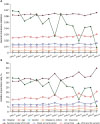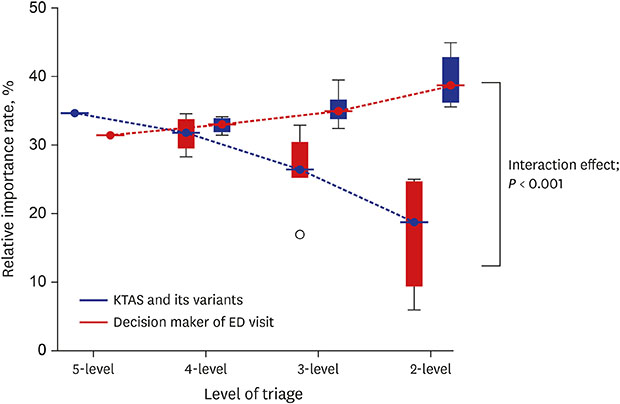1. Iserson KV, Moskop JC. Triage in medicine, part I: Concept, history, and types. Ann Emerg Med. 2007; 49(3):275–281.


2. Travers DA, Waller AE, Bowling JM, Flowers D, Tintinalli J. Five-level triage system more effective than three-level in tertiary emergency department. J Emerg Nurs. 2002; 28(5):395–400.


4. Shelton R. The Emergency Severity Index 5-level triage system. Dimens Crit Care Nurs. 2009; 28(1):9–12.


5. Schellein O, Ludwig-Pistor F, Bremerich DH. Manchester triage system. Process optimization in the interdisciplinary emergency department. Anaesthesist. 2009; 58(2):163–170.

6. Bullard MJ, Musgrave E, Warren D, Unger B, Skeldon T, Grierson R, et al. Revisions to the Canadian Emergency Department Triage and Acuity Scale (CTAS) guidelines 2016. CJEM. 2017; 19:S2. S18–S27.

7. Park J, Choi H, Kang B, Kim C, Kang H, Lim T. A nationwide Survey of Korean Emergency Department Triage Systems and Scales; a first step towards reform of the emergency medical service system. J Korean Soc Emerg Med. 2014; 25(5):499–508.
8. Emergency Medical Service Act in Korea. Article 31-4: Triage for Patients and Selection of Patients Suspected of Having Infectious Disease. Sejong: National Law Information Center;2018.
9. Health Insurance Review & Assessment Service. Recuperation Cost of National Health Insurance. Wonju: Health Insurance Review & Assessment Service;2017.
10. National Emergency Department Information System (NEDIS). Standard Registration System and Input Guideline ver. 3.1. Seoul: National Emergency Medical Center;2016.
11. Luchman JN. Relative importance analysis with multicategory dependent variables: an extension and review of best practices. Organ Res Methods. 2014; 17(4):452–471.
12. Kwon H, Kim YJ, Jo YH, Lee JH, Lee JH, Kim J, et al. The Korean Triage and Acuity Scale: associations with admission, disposition, mortality and length of stay in the emergency department. Int J Qual Health Care. 2018.

13. Kim JH, Kim JW, Kim SY, Hong DY, Park SO, Baek KJ, et al. Validation of the Korean Triage and Acuity Scale compare to triage by emergency severity index for emergency adult patient: preliminary study in a tertiary hospital emergency medical center. J Korean Soc Emerg Med. 2016; 27(5):436–441.
14. Kim JY, Hong DY, Kim SY, Kim JW, Park SO, Lee KR, et al. Reliability of Korean Triage and Acuity Scale-based triage system as a severity index in emergency patients. J Korean Soc Emerg Med. 2017; 28(6):552–556.
15. Budescu DV. Dominance analysis: a new approach to the problem of relative importance of predictors in multiple regression. Psychol Bull. 1993; 114(3):542–551.

16. Azen R, Budescu DV. The dominance analysis approach for comparing predictors in multiple regression. Psychol Methods. 2003; 8(2):129–148.


17. Johnson JW. A heuristic method for estimating the relative weight of predictor variables in multiple regression. Multivariate Behav Res. 2000; 35(1):1–19.


18. Azen R, Traxel N. Using dominance analysis to determine predictor importance in logistic regression. J Educ Behav Stat. 2009; 34(3):319–347.











 PDF
PDF Citation
Citation Print
Print









 XML Download
XML Download